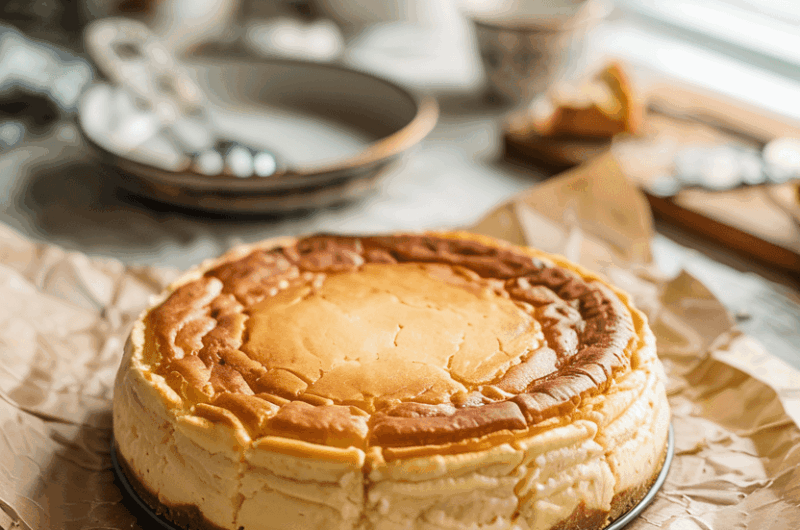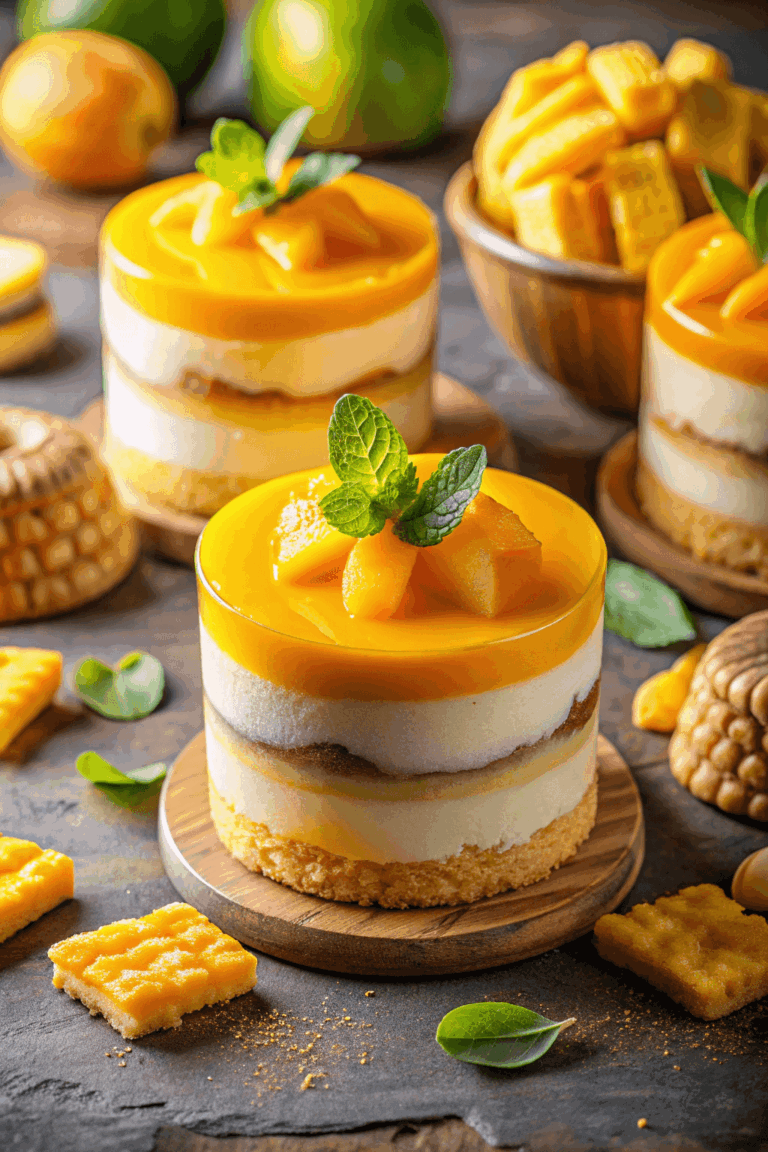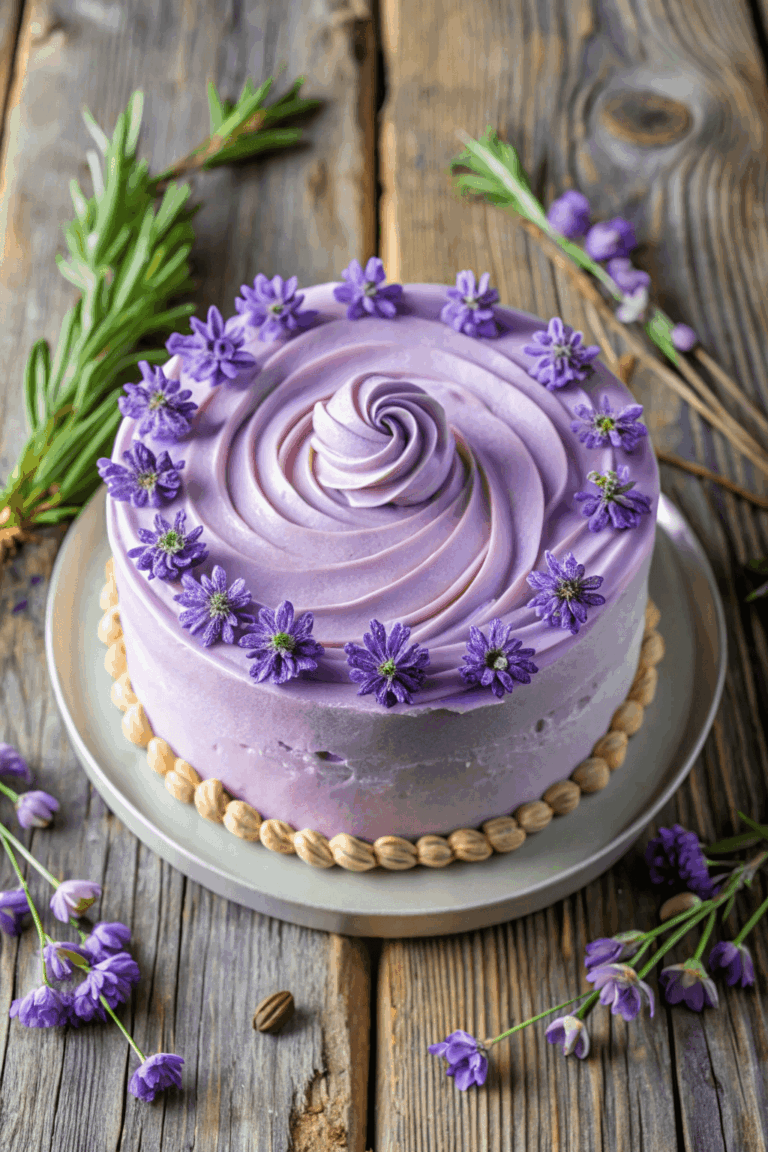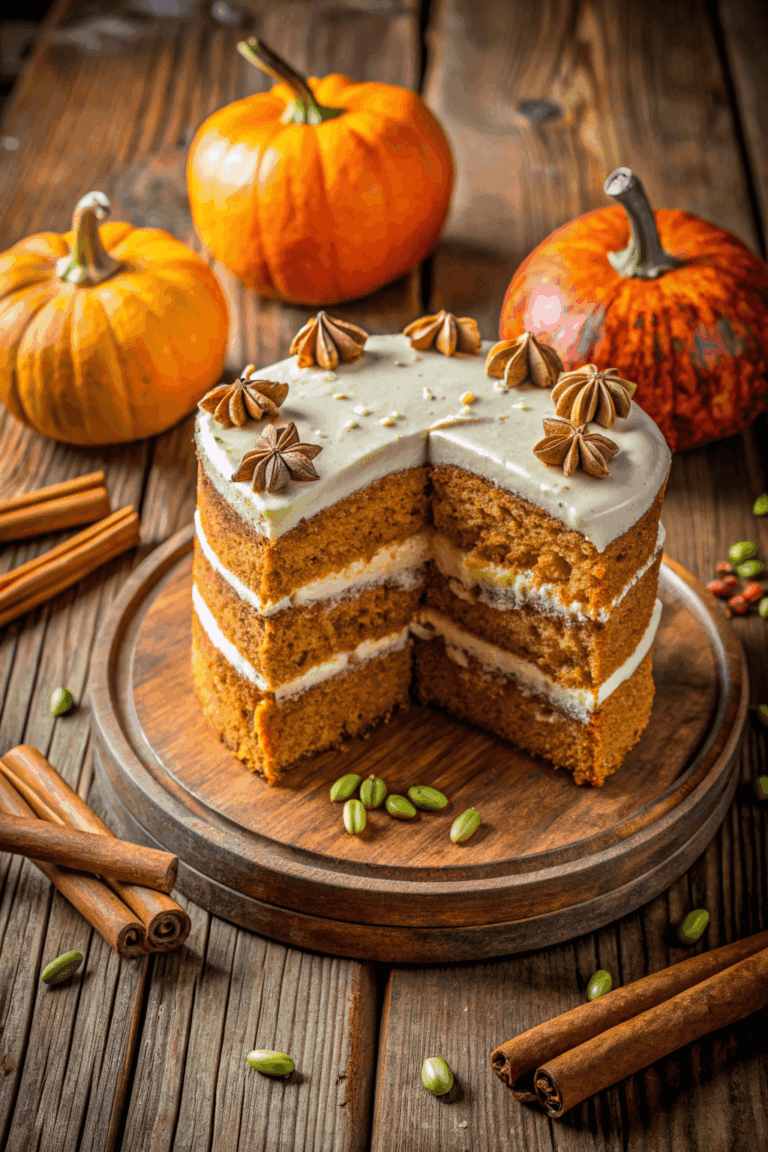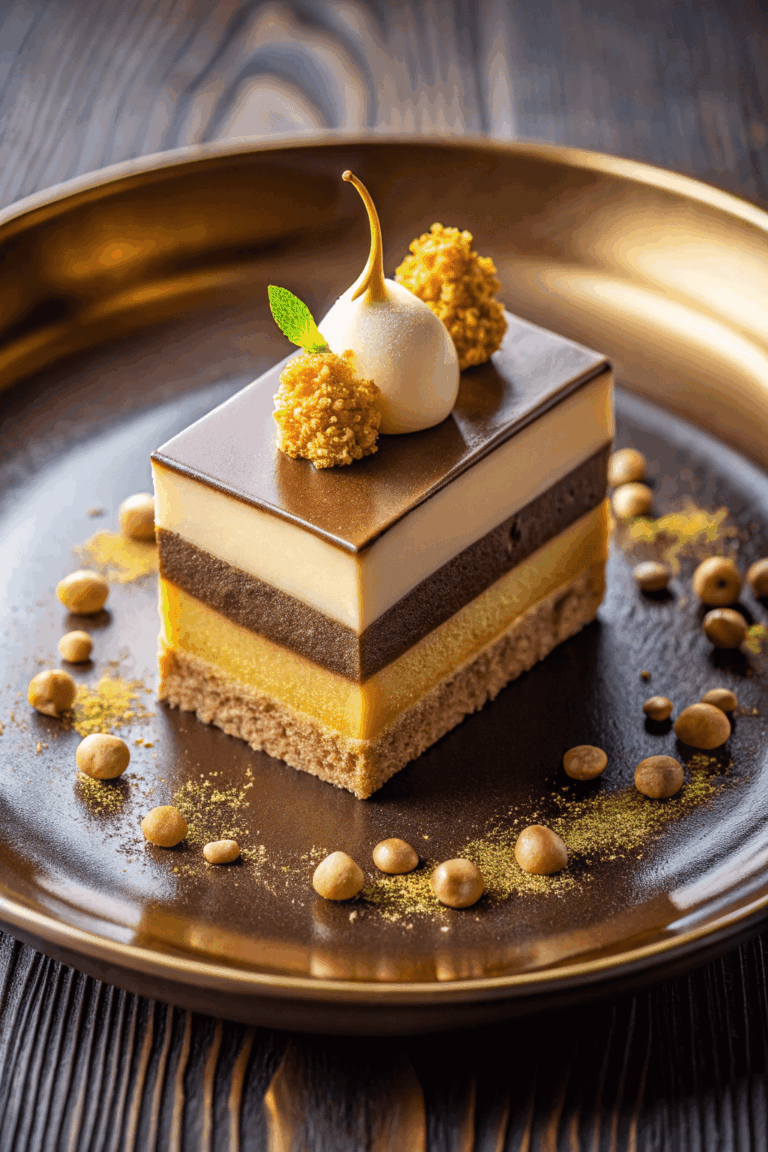The Best Fluffy Pancakes recipe you will fall in love with. Full of tips and tricks to help you make the best pancakes.
Japanese Cheesecake Recipe – Bring a Taste of Tokyo to Your Kitchen
A slice of Japanese cheesecake feels like biting into a sweet cloud: delicately tangy from cream cheese, softly perfumed with citrus, and so airy it practically levitates off your fork.
Unlike dense New‑York style cheesecake, this version rises on the power of a carefully whipped meringue and sets in a gentle steam bath, creating a wobbly top and cotton‑soft interior.
With the right technique—and a few science‑backed tricks—you can achieve bakery‑level results in a home oven. Let’s dive into everything you need to know to master this crowd‑pleasing showstopper.
Nutrition Table (Per 1 of 10 Slices)
| Calories | 175 kcal |
| Fat | 11 g |
| Sat. Fat | 6 g |
| Carbs | 14 g |
| Sugar | 10 g |
| Protein | 4 g |
| Sodium | 115 mg |
| Cholesterol | 95 mg |
Values via standard nutrition calculator; actual may vary.
Japanese Cheesecake Recipe
Course: DessertCuisine: JapaneseDifficulty: Intermediate1
slice30
minutes55
minutes175
kcalJapanese cheesecake is a hybrid of classic Western cheesecake and Japanese castella sponge, marrying creamy richness with feather‑light texture.
This recipe breaks down each step—from emulsifying cream cheese and milk to folding billowy egg whites—so home bakers of any skill level can succeed.
You’ll discover why a low‑and‑slow bake, a tall parchment collar, and a gradual cool‑down are essential for maintaining height and preventing cracks. Beyond the method, ingredients play a starring role: full‑fat cream cheese supplies tang and structure; cake flour keeps crumbs ultra‑delicate; lemon zest brightens flavor without overwhelming sweetness.
Follow this Japanese Cheesecake Recipe once and you’ll unlock a dessert that jiggles charmingly on the plate, slices cleanly without a crust, and melts in your mouth—guaranteeing applause at birthdays, potlucks, or quiet Tuesday nights.
Ingredient List (7‑Inch / 18 cm Round, Tall Pan)
250 g (9 oz) full‑fat cream cheese, room temperature
60 g (4 Tbsp) unsalted butter, room temperature
100 ml (≈⅓ cup + 1 Tbsp) whole milk, lukewarm
150 g (¾ cup) granulated sugar, divided
6 large eggs, separated
70 g (½ cup + 1 Tbsp) cake flour, sifted
15 g (2 Tbsp) cornstarch, sifted
½ tsp lemon zest (about half a small lemon)
1 Tbsp fresh lemon juice
½ tsp pure vanilla extract
¼ tsp cream of tartar (or ½ tsp lemon juice)
Pinch fine sea salt
Directions
- Line the Pan & Preheat
Cut a parchment circle for the base of a 7‑inch (18 cm) cake pan, line the sides with a tall parchment collar that rises about 2 inches above the rim, and lightly grease everything. Place a deep roasting tray on the lower‑middle oven rack and preheat to 325 °F (160 °C). - Prepare the Cheese Base
Set cream cheese, butter, and milk over barely simmering water, stirring until smooth and glossy. Off the heat, whisk in lemon zest, lemon juice, vanilla, and salt. Let cool briefly, whisk in the egg yolks, then sift in the cake flour and cornstarch and whisk until silky. - Whip the Meringue
Beat egg whites with cream of tartar until foamy, then slowly add two‑thirds of the sugar while beating to soft‑medium peaks. Sprinkle in the remaining sugar and give a final quick whip—the peaks should curl softly like soft‑serve. - Fold with Precision
Whisk a third of the meringue into the cheese batter to lighten, then gently fold in the rest with a rubber spatula until just combined, leaving a few faint streaks. - Fill, Tap & Water Bath
Pour the batter into the prepared pan until three‑quarters full, tap twice to release bubbles, run a skewer through in a zigzag to burst hidden pockets, set the pan in the hot roasting tray, and pour about 1 inch (2.5 cm) boiling water around it. - Bake Low and Slow
Bake 25 minutes at 325 °F (160 °C), then reduce to 300 °F (150 °C) and continue 55–60 minutes until the top is pale gold and the center registers 155–158 °F (68–70 °C). - Controlled Cool‑Down
Turn off the oven, crack the door, and let the cake rest 15 minutes. Remove from the water bath, loosen the parchment edges, cool on a rack 1 hour, then chill (still in the pan) at least 4 hours or overnight. - Serve the Jiggle
Unmold, peel away parchment, and slice with a hot, dry knife. Enjoy the cloud‑soft crumb and signature wobble.
Pro Tips for Success
- Weigh Eggs: Large eggs differ worldwide. Whites ≈30 g each deliver best foam.
- Avoid Drafts: Sudden temperature drops shrink the cake—close windows and don’t
- Mind Humidity: On rainy days reduce water‑bath depth by ¼ inch; excess steam can make texture rubbery.
- Check Thermometer: Internal temp is more reliable than bake time for doneness.
Essential Equipment
- 7‑inch round cake pan, 3 inches tall
- Parchment paper and scissors
- Deep roasting tray for water bath
- Stand mixer or hand mixer with whisk attachment
- Digital scale (accuracy!)
- Instant‑read thermometer
- Rubber spatula, balloon whisk, fine‑mesh sieve
Storage & Make‑Ahead
Up to 48 Hours: Keep cake in its pan, wrapped, chilled.
Freeze (1 Month): Slice, wrap twice, store airtight. Thaw overnight in fridge and bring to room temp 15 minutes before serving.
Revive Day‑Old Slices: Microwave 8–10 seconds to restore fluff.
Flavor Variations
- Matcha Marble: Whisk 1 Tbsp sifted matcha into ¼ batter; swirl before baking.
- Cocoa Dream: Replace 10 g flour with Dutch‑process cocoa for chocolate‑kissed crumb.
- Citrus Twist: Swap lemon zest for yuzu or orange zest.
Pro Tips for Success
- Weigh Eggs: Large eggs differ worldwide. Whites ≈30 g each deliver best foam.
- Avoid Drafts: Sudden temperature drops shrink the cake—close windows and don’t slam oven doors.
- Mind Humidity: On rainy days reduce water‑bath depth by ¼ inch; excess steam can make texture rubbery.
- Check Thermometer: Internal temp is more reliable than bake time for doneness.
Frequently Asked Questions
Why did my top crack?
Likely over‑beaten meringue or an oven that runs too hot. Verify temperature accuracy with an oven thermometer and avoid whipping the meringue past soft‑medium peaks.
Why is the cake gummy at the base?
The batter may have been under‑folded or water leaked into the pan during the water‑bath bake. Ensure a tight parchment and foil seal, and fold only until the last white streak disappears.
Can I double the recipe?
Yes. Use a 9‑inch (23 cm) pan at least 4 inches (10 cm) tall, maintain the same two‑stage temperature profile, and add about 20 minutes to the second bake stage.
Serving Suggestions
- Dust chilled cake with powdered sugar for snowy elegance.
- Plate alongside fresh berries and a drizzle of raspberry coulis to contrast sweetness.
- Pair with ceremonial‑grade matcha for an authentic Japanese café vibe.
Conclusion
With its impossibly light crumb, gentle citrus perfume, and iconic wobble, Japanese cheesecake delivers a show‑stopping finale for any meal—yet it relies on just a handful of pantry staples and mindful technique. Master the soft‑peak meringue, steam‑bath bake, and slow cool‑down once, and you’ll have a crowd‑pleasing dessert in your back pocket for birthdays, holidays, or the simplest craving for something sweet and ethereal. Serve it solo, showered with powdered sugar, or dress it up with bright berries; either way, every slice disappears faster than you can say “itadakimasu.”

